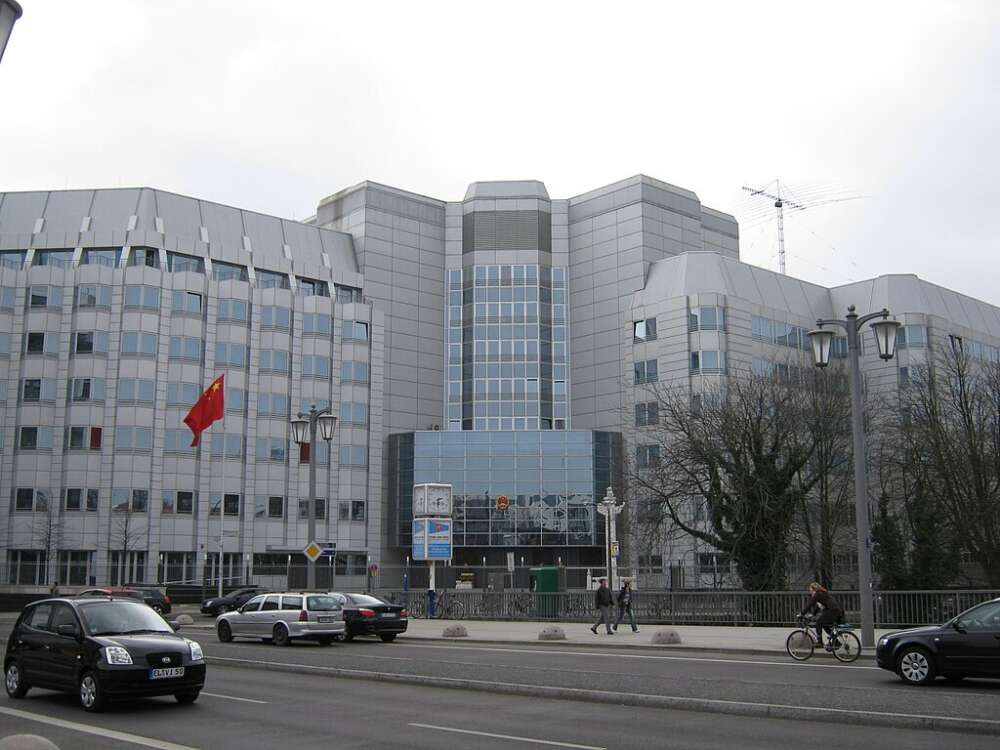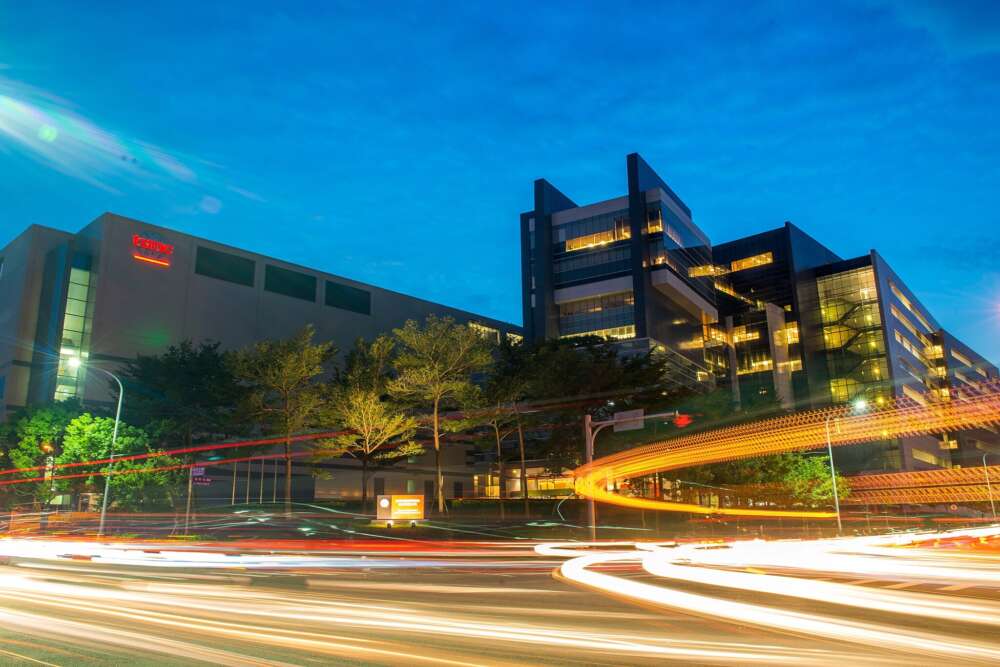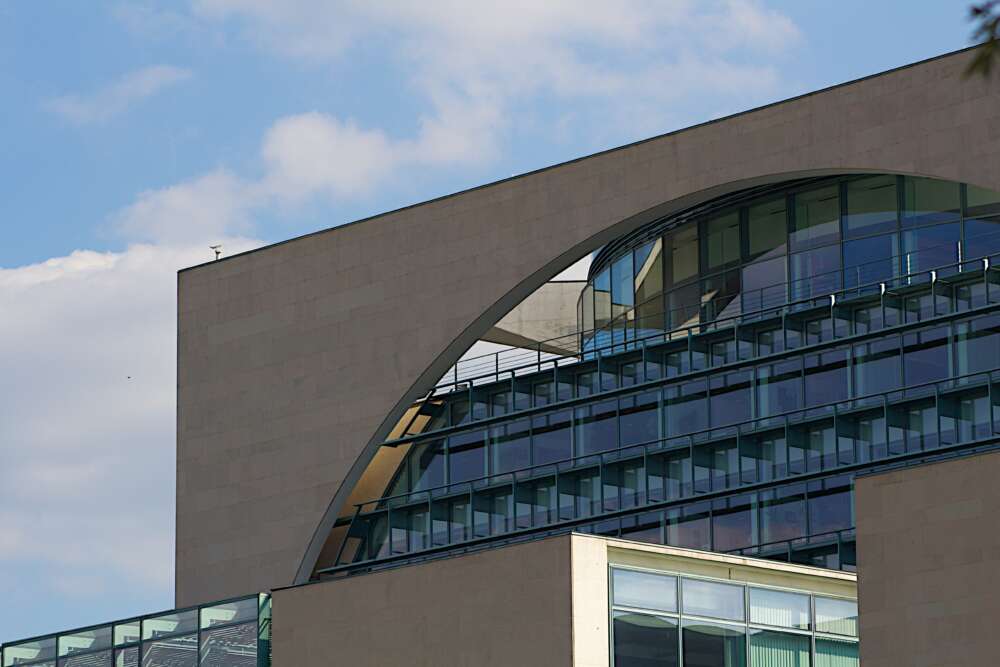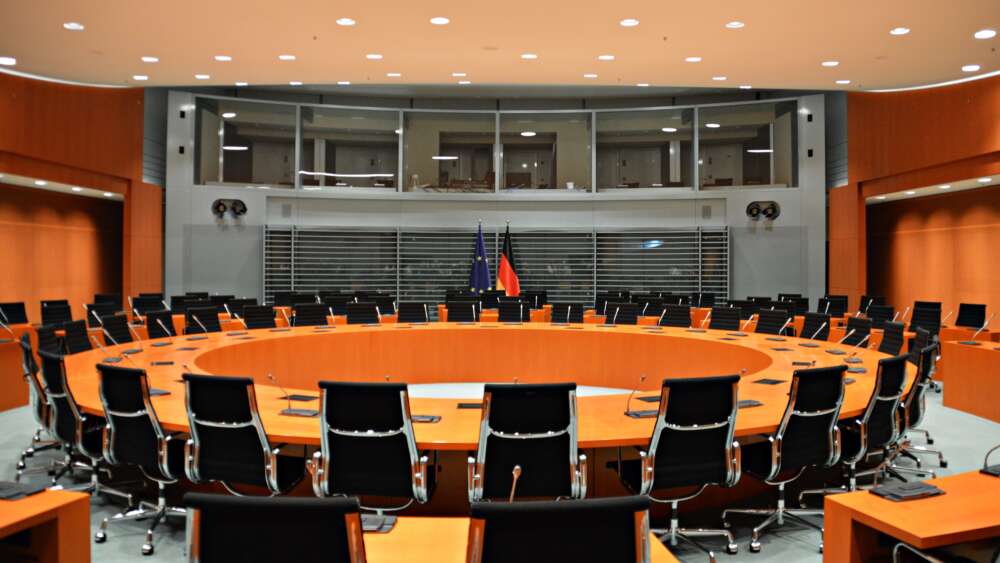Seize the India–Germany Moment
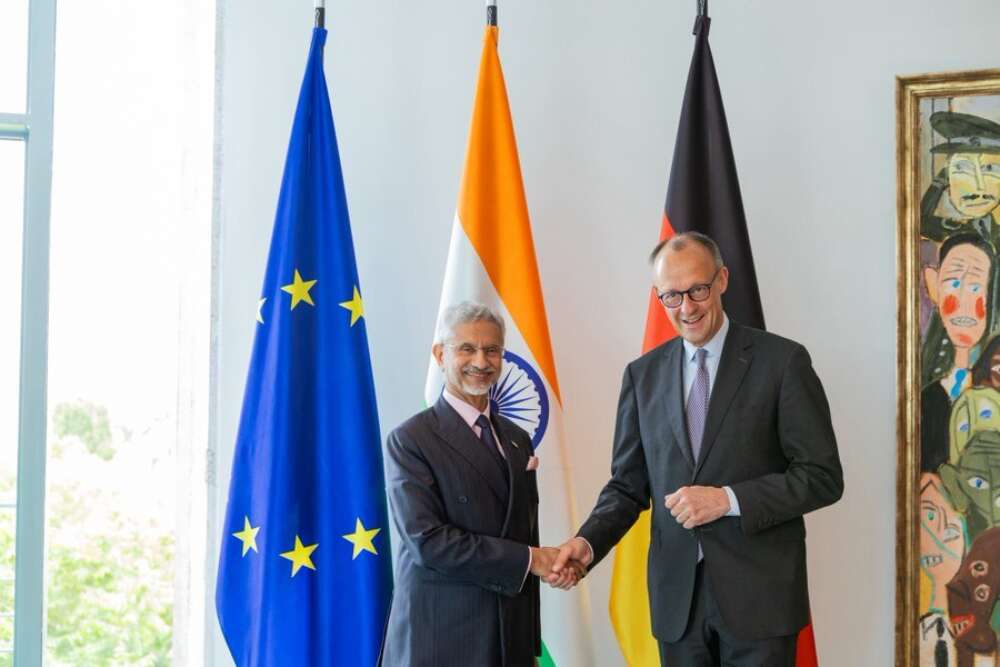
India’s External Affairs Minister Subrahmanyam Jaishankar’s visit to Germany, from 22 – 24 May 2025, underlined the 25 years of India and Germany’s strategic partnership. His visit within a month of a new government in Germany is reflective of the high priority — and in his words, “high expectations” that India has — both sides attach to bilateral ties. India and Germany need “to forge new ways to this relationship,” said Jaishankar at a high-level think tank dialogue at the German Council on Foreign Relations (Deutsche Gesellschaft für Auswärtige Politik, or DGAP) in Berlin. The Indo-German relationship is shaped in the context of geopolitical realities, international uncertainty and volatility. With the rise of artificial intelligence (AI), geopolitical tensions in the Indo-Pacific, the war in Ukraine, the war in Gaza, climate change, and damage done by the COVID-19 pandemic still present in many parts of the world, the global picture is challenging. But there are high expectations for India and Germany to broaden and deepen their partnership and address these challenges. That is why the Germany – India partnership, and EU – India partnership with Germany at the centre, is more important than ever before.
Considering the difficult forecast for the German economy in 2025, and the unpredictable global geopolitical landscape, Jaishankar’s visit led to renewed engagement, injecting fresh momentum in the strategic partnership and reaffirming commitment from both sides to further strengthening political, economic, technological and people-to-people ties. Five areas were highlighted where Indo-German collaboration and strategic initiatives can be broadened and deepened for mutual benefit. These include defence and security, talent and mobility, digital technologies and AI, sustainability and trade.
Defence and security
Describing the Indo-German defence and security partnership as a “off and on relationship,” External Affairs Minister Jaishankar suggested that Germany’s conservative government, led by Chancellor Friedrich Merz of the Christian Democratic Union party, can take things forward with New Delhi. There is something both countries can offer each other in the areas of naval exercises and enhanced export licensing practices with German defence export. Germany is trying to increase its presence in the Indo-Pacific region where 20 per cent of its trade is conducted, and half of Germany’s sea-borne supply traverses the Indian Ocean along with a majority of European sea trade. Germany conducted its second Indo-Pacific deployment in 2024, with the German Navy’s frigateBaden-Württemberg sailing through the Indian Ocean and joining naval exercises with India, and other partners. The aims were twofold: to keep trade routes open, and to counterbalance China’s presence and sometimes aggressive behaviour in sea lanes vital for global trade.
Meanwhile, India has strengthened its role as a“net security provider” in the region. India’s maritime focus comes as China bolsters land and sea capabilities in the Indian Ocean. Germany’s Focus on India policy document seemingly recognises this ramping up, putting new emphasis on India as a“security partner”. The German and Indian governments should focus on two parallel approaches to realise their“convergences on key foreign and security policy challenges.” First, as set out in the Focus on India statement, they should pursue“practical cooperation” between their armed forces and“reliable armaments cooperation.” This means the German Navy needs to ramp up maritime activities in collaboration with its Indian counterpart. For example, they should pursue more complex manoeuvres such as replenishment-at-sea exercises, joint drills for offensive and defensive scenarios, and crew member exchanges between ships to gain insights into the life and work of Indian naval officers.
Second, the two governments need to act on their commitment to“enhanced industrial-level cooperation in the defence sector” focusing on“technology collaboration, manufacturing/co-production and co-development of defence platforms and equipment.” The recent announcement by the German engineering and steel production conglomerate Thyssenkrupp of their plan to team up with India’s state-owned Mazagon Dock Shipbuilders to build six advanced conventional submarines for the Indian Navy is a welcome move. The new German government can expect more collaboration between India and Germany on defence when the requirements, price expectations and availability match.
Talent and mobility
“Across the world there is a mismatch between demand and demographic change,” observed Jaishankar at the council meeting in Berlin. “India can fashion a global workforce to match the needs of the global workplace,” he said and told the audience that talented and highly skilled Indians are coming to Germany and this increase is helping the growth of the German economy. In Germany, skilled labour shortages are at risk of hindering economic growth and progress. Labour migration is essential for Germany to mitigate the impacts of an ageing society and address challenges of decarbonisation, digitalisation and innovation. These sectors have been slow to develop in Germany in the last decade and these areas of the economy face a shortage of skilled labour, which directly impacts the German competitiveness.
The situation in India is different, where large cohorts of very well-educated young people are entering the labour market that has limited capacity to absorb them. In India the issue is not only about unemployment but also inadequate employment. For this reason, India is actively encouraging labour migration. As such, facilitating the fluid movement of workers across borders comes with benefits for both countries. The Migration and Mobility Partnership agreement signed by India and Germany in December 2022, must be reinforced to help grow the German economy and bring highly skilled Indian professionals to build up high-growth sectors in the country. Germany’s 2024 Skilled Labour Strategy for India offers measures to attract and integrate talent.
As Jaishankar said at the meeting, “more academic exchange, more trade, interpenetration of our practices” and other forms of exchanges need to flow between India and Germany. These are crucial steps to realise the economic potential between the two countries, but sustained efforts will be needed to turn vision into reality.
Digital technologies and AI
Technology partnerships have long been a cornerstone of Indo-German relations, formalised first in 1974 with an intergovernmental agreement on scientific research and technological development. This agreement laid the foundation for decades of joint initiatives, but the need for stronger, more advanced research will only continue to grow in our increasingly complex world. The two governments need to focus on increasing collaboration between Indian and German businesses in innovation and technology. For example, both countries are increasing semiconductor development, an essential part of modern electronics. These parallel developments can be strengthened through exchange and collaboration. Helping to find ways to make semiconductor chips available to the world is important for both countries.
India is a global innovation hub, presenting opportunities for German companies to leverage its strength in research and development. India’s emerging status as a destination for deep tech innovation, including AI, and the potential for collaborative ventures between startups from both countries should be supported through new models of partnerships aiming to create synergies for technological advancements and economic growth. At the same time, both governments will need to address issues related to privacy, rights of citizens and protection of data in the age of AI. High-level engagements, including the 7th Intergovernmental Consultations in October 2024, reaffirmed the two nations’ commitment to innovation, mobility and sustainability, and put forward a roadmap for digital cooperation. It is imperative to advance this research partnership into areas that align with and will enhance bilateral relations. As Jaishankar said, “India is a place to deploy, work, adapt and improve because the scale is so large.” By leveraging Germany’s advanced research capabilities and India’s large-scale implementation potential, these partnerships can develop scalable solutions that can benefit the world.
Sustainability
Other areas ripe for deeper cooperation between Germany and India are developing clean energy and tackling climate change. The latter constitutes a major economic and security issue for India, and increasingly for Germany and Europe. If the Indian economy and population continue to grow at the current trajectory, so will its energy needs and consumption.
Expanding their cooperation on clean energy/renewables and a green energy transition offers many potential benefits to Germany and India, and existing Indo-German initiatives such as the Green Hydrogen Task Force and the Indo-German Energy Forum provide strong foundation to build upon. The agreement signed between Germany-based Uniper and Greenko ZeroC to source green ammonia from India is an encouraging example of the role India can play in helping Germany secure a supply of low carbon hydrogen products. Indo-German collaboration on the deployment of flexible renewable electricity and other hydrogen products, such as e‑methanol and sustainable aviation fuels, are promising areas to further advance research and development.
There is also a strong economic incentive for Germany to stay invested in the energy transition of the world’s most populous country. With the Indian energy market poised to grow by enormous proportions in the coming years, Germany can build on its €10 billion commitment to drive forward the energy transition in India by promoting clean energy initiatives that also help India achieve its climate targets. While the European Union is actively supporting climate change adaptation programs with development funding, there is room for Germany to become more involved in this field. Germany should expand the work done by its KfW Development Bank on upgrading energy distribution grids to better absorb fluctuations when they are fed by green energy. By strengthening India’s distribution networks and their efficient management, Germany could support India’s drive to ensure a stable power supply for its citizens and thus its economic development.
Trade
India and Germany “still have a long way to go, especially between the third and fourth largest economies,” Minister Jaishankar said during his talk at the GDAP. Bilateral trade reached approximately €26 billion in the 2022 – 23 fiscal year. Germany is India’s largest trading partner within the EU and India ranks among Germany’s top trading partners in Asia, but there is potential for even greater mutual benefit through trade. In February 2025, discussions on the long-stalled EU – India Free Trade Agreement (FTA) were revived, following a visit by Ursula von der Leyen, president of the European Commission, to India. The FTA offers a moment of synergy for Germany and the EU’s approaches to India. Europe, and Germany, urgently needs strong trading partners amidst the global trade war, and with India also facing tariff pressures from the US, the need for stable economic partnerships is paramount.
That said, while waiting for an FTA breakthrough, Germany and India should continue to prioritise sector-specific trade. This includes machinery, electronics, chemicals, aviation and vehicles. Ensuring trade remains future-ready and strategically aligned will also require India and Germany to expand their cooperation in AI, semiconductors and digital infrastructure — areas already shaping Indo-German investments.
Conclusion
Given their shared goals, complimentary capabilities and strong ties, India and Germany are well placed to work together and tackle some of these pressing global challenges. As their approach to working together, especially under the new German leadership, continues to evolve in the years ahead, leaders in both countries should focus on balancing the breadth and depth of their partnership to ensure the right combination of long-term commitments and agility to adapt to new challenges. While on the one hand, focused collaboration in key sectors builds trust and proves that cooperation delivers results, a diverse agenda ensures the partnership remains flexible and responsive to changing priorities. But one thing is sure: delays in deepening cooperation will weaken long-term economic and security prospects, leading to disappointment and frustration. A fragmented and highly contested geopolitical landscape leaves no room for hesitation. Germany and India need to translate strategy into reality.
This commentary was originally published on India’s World on June 2, 2025.

